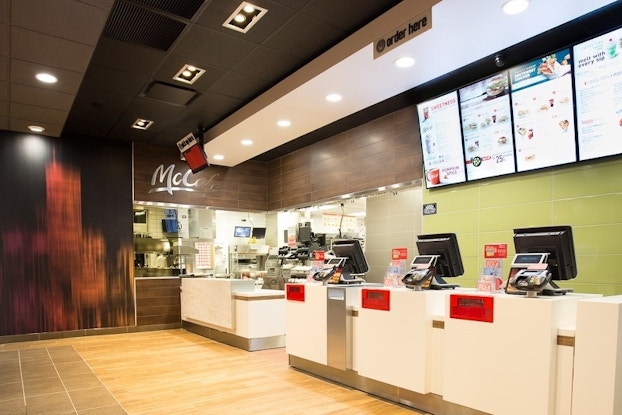
As COVID-19 spreads throughout the country, a growing number of state and local governments have begun ordering the closure of bars and restaurant dining rooms to avoid the spread of the virus among customers. Some of the nation’s largest quick-serve restaurant chains have moved to the stay ahead of the issue by transitioning to off-premise dining only throughout their operations.
Independent restaurants are adapting by offsetting their dine-in business with delivery, takeout and even drive-thru services, where feasible.
That’s been the strategy of the national foodservice establishments. McDonald’s, for example, this week said it was closing the dining rooms of all of its company-owned restaurants and encouraged its franchisees, who operate most of the chain’s 14,000-plus U.S. locations, to do the same. The fast-food chain continues to offer drive-thru and delivery where available, as well as walk-in/takeout.
In the U.S., “substantially all” restaurants are now offering food for off-premises consumption only, the company said in a March 17 filing with the Securities and Exchange Commission.
The filing also said said the outbreak is disrupting McDonald’s operations around the world, and noted that the situation is changing constantly as more and more countries declare states of emergency and force restaurant closures. In some countries, including Italy and Spain, all McDonald’s restaurants have closed.
McDonald’s said that in China, where the COVID-19 outbreak began, about 95% of restaurants are now operating, while in Japan, which also suffered an early outbreak that appears to have been contained, all McDonald’s restaurants are open for business.
The company, which acts as a landlord for many of its franchisees, also said it was exploring ways to help those independent business owners, such as through rent deferrals. It is also working with its vendors to ensure it can maintain continuous supply of product to create its signature burgers and other fare.
“At this time, neither the duration nor scope of the disruption can be predicted,” the company said in the filing. “Therefore, the negative financial impact to our results cannot be reasonably estimated.”
In addition to closing its dining rooms across the U.S., McDonald’s also is supplying hand sanitizer for customers and employees, encouraging employees to wash their hands more frequently, and cleaning and sanitizing high-impact areas of the restaurants more often. It is also closing all of its PlayPlace children’s play areas.
Independent restaurants are adapting by offsetting their dine-in business with delivery, takeout and even drive-thru services, where feasible.
Coronavirus Guide for Small Businesses
CO— is working to bring you the best resources and information to help you navigate this challenging time. Read on for our complete coronavirus coverage.
Starbucks: ‘Leveraging the considerable operational insights we’ve gained from our experience in China’
As of March 15, Starbucks also said it has closed all of its café seating areas nationwide and is only offering items to go. Like McDonald’s, the Seattle-based coffee chain said its business in China is recovering as that country gains control of the virus’s spread.
Starbucks said in a March 5 filing with the SEC that more than 90% of its stores in China are open but operating under “elevated safety protocols,” including limited lobby service, minimal café seating, and mobile app-based ordering and payment to minimize customer contact with surfaces in the stores.
“We are prepared to respond to any situation that may unfold in any of our markets around the world, leveraging the considerable operational insights we’ve gained from our experience in China,” Starbucks said in the filing.
Another restaurant company at the vanguard of dining-room closures is Chick-fil-A, which operates 2,500 chicken sandwich restaurants across the U.S. and Canada. The Atlanta-based chain’s coronavirus response illustrates the rapid escalation of the crisis. On March 13, the company announced it was stepping up its sanitation procedures, encouraging sick employees to stay home, and closing its playground areas. Just two days later it announced that all its restaurants would close their dining rooms and offer drive-thru and takeout service only, where it was possible to do so.
Advice for restaurant operators
Rick Camac, dean of restaurant and hospitality management at the Institute of Culinary Education in New York City and a veteran restaurateur, said restaurant operators forced to close should immediately begin negotiating reduced payments with landlords.
Similarly, Camac suggested that restaurants also negotiate reduced payments with their insurance companies and utilities providers, and seek some help from government agencies to provide compensation for employees who are let go. Operators might also consider taking advantage of special low- or no-interest loans for this purpose.
Filing for bankruptcy might also be the best option for some restaurant operators, he said. It can provide leverage for negotiations with landlords and other creditors when the restaurant seeks to reopen.
Other advice Camac offered for restaurants forced to close:
- Check the business’s insurance policy to see if it covers business interruption, and scan both the insurance policy and the lease contract to see if there’s a force majeure clause — which offers parties relief provisions in exceptional situations beyond their control — that might cover a disease outbreak.
- Preserve high-cost proteins in the freezer if possible, and give perishables away.
- Consider giving the restaurant a deep cleaning. “I know that's not going to keep you in business or help you survive, but it will help you get back open quicker,” Camac said.
Foodservice businesses can turn to these resources for industry-specific information and guidance to help them navigate COVID-19:
CO—is committed to helping you start, run and grow your small business. Learn more about the benefits of small business membership in the U.S. Chamber of Commerce, here.







